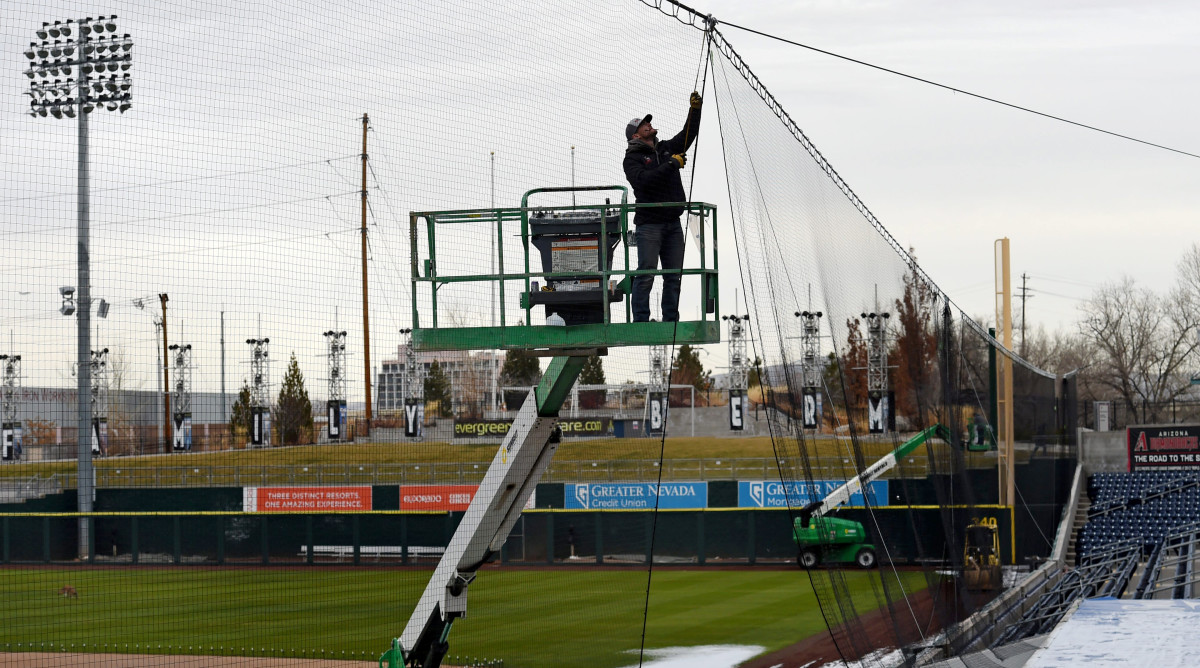MLB Passes Protective Netting Requirements at Minor League Ballparks


Major League Baseball will require all of its affiliated minor league ballparks to have protective netting extended down each foul line by no later than the start of the 2025 season, the league and Senator Dick Durbin (D–Ill.) announced in a statement Wednesday. The new policy is a victory for advocates who have long warned of the dangers of foul balls—especially in the age of cell phone distraction—though it does not affect major league ballparks.
“Minor League Baseball is an exciting option for families to spend time together and experience professional baseball in an up close and personal way,” said MLB deputy commissioner Dan Halem in a statement. Referring to the affiliated clubs by their new designation since MLB’s 2021 restructuring of the minors, the Professional Development League, he continued, “By taking this action, our PDL Clubs have underscored their commitment to ensuring the safety of fans remains a top priority.”
The announcement comes after the MLB Player Development League Executive Board voted unanimously to pass the initiative earlier this week. Clubs will have access to a consultant who specializes in stadium architecture and protective netting to help them comply with the initiative, which according to the announcement requires netting from foul pole to foul pole “unless the configuration of the ballpark makes such coverage unnecessary.” There also will be a mandatory height for the netting behind home plate that runs to the end of the dugouts.
“I'm just gratified that finally after seven years of pushing them to do the right thing, and after so many people have gotten hurt along the way, they finally have taken some steps to make these ballparks much safer,” says Andy Zlotnick, a Manhattan real estate executive and lawyer who was hit in the face at Yankee Stadium in 2011. “I'm thankful that the league figured it out.”
An NBC News investigation from October 2019 found that more than 800 fans reported being injured by baseballs at MLB games from ’12 to ’19, though these figures do not include injuries at minor league parks.
Zlotnick has been one of the most vocal fan safety advocates in the country. Over the last seven years, he has formed a coalition of fans who were injured at baseball games, and together, they have shared their stories and called on MLB to do more to protect them. In doing so, they swayed public opinion and caught the attention of Durbin, the Senate Democratic Whip, who leveraged his position as the second-highest ranking member in the chamber to put pressure on the league and push others to support additional netting at ballparks.
MLB and its teams in recent years have taken some measures to make their parks safer. At the 2019 winter meetings, commissioner Rob Manfred announced that all 30 MLB teams would extend the netting at their stadiums before the start of the next season, though there was little specificity for how far the netting had to go. As of August ’21, only six big-league parks had fully extended netting, from foul pole to foul pole, while 22 parks had nets that extended to the elbows, the area where the side wall changes direction and angles away from the field. The remaining two—Great American Ballpark in Cincinnati and Tropicana Field in St. Petersburg, Fla.—had extended it past the dugouts but short of the elbows. Still, fans attending MLB games were protected more than they ever had been before.
The same could not be said for minor league ballparks. Previously, the decision to install netting was left to the individual minor league clubs, many of which lack resources to pay for adequate netting. It would cost approximately $120,000 to extend the netting 300 feet down both lines at a typical stadium, according to Nathaniel Grow, an associate professor of business law and ethics at Indiana University’s Kelley School of Business who has written about fan safety at ballparks.
Now, there is a uniform policy that all 120 affiliated minor league teams must follow, though it is still unclear how they will cover the costs. When asked, MLB declined to say who would pay for the netting at PDL parks.
